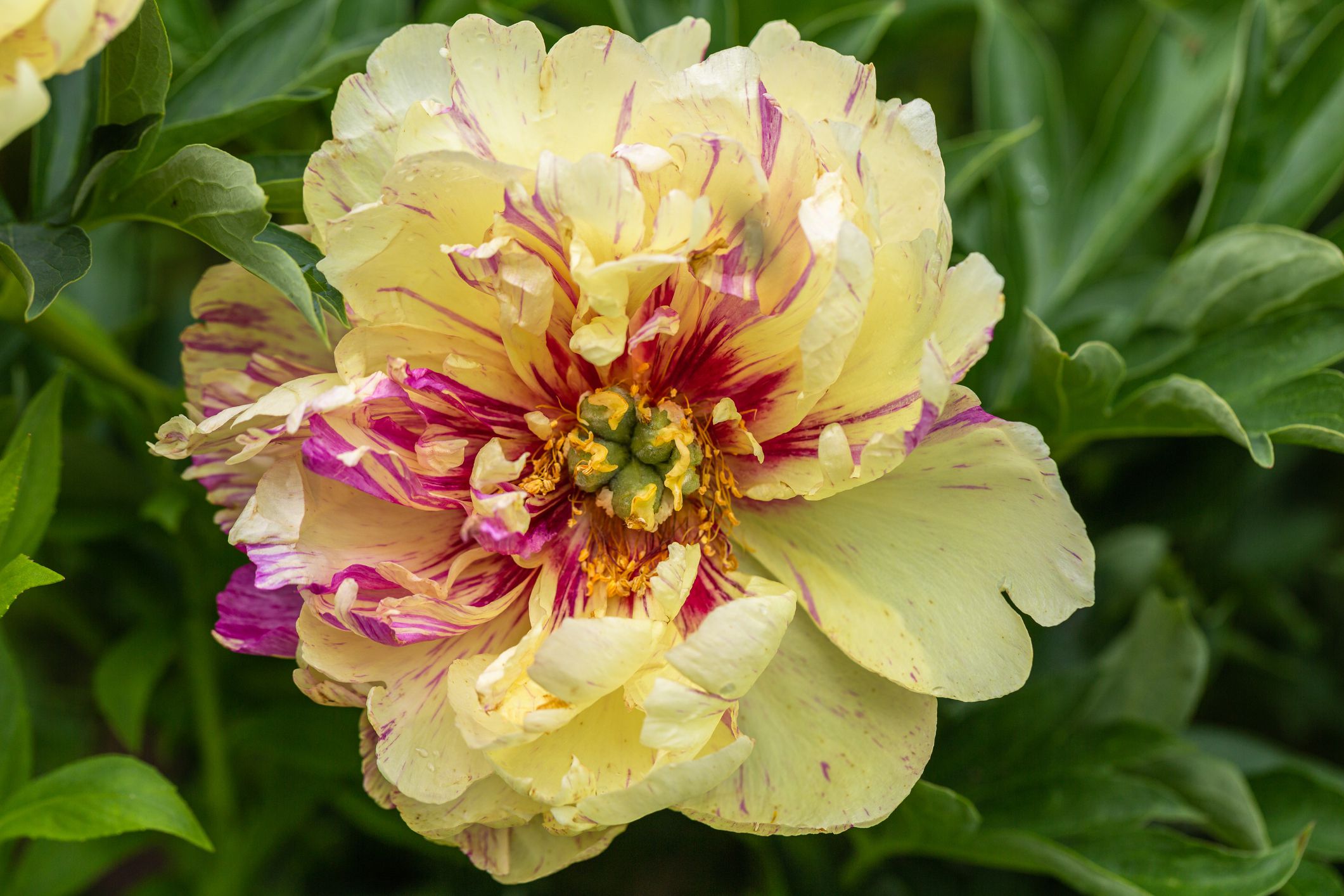
‘Lollipop’
Today, early August 2023, I have just purchased and planted my first ever bare rooted Itoh peony. Two in fact, Caroline Constable and Canary Brilliants. They were prohibitively expensive, between $55 to $79 for a single dormant specimen in plastic bulb bags. With a little research of online quality bulb companies, I discovered they were asking nearly double the price, and Etsy well half the price.
Due to their colossal price, I waited a week, nearly two. They were way above my pay scale. I pondered and procrastinated, wracked with indecision. In the nursery I secretly squirrelled away in a dark corner a few varieties for myself to purchase when my long hesitation was hopefully resolved. The rest, for they were so rare, exclusive and of the highest quality, with multiple thick roots as wide and longer than fingers, and half a dozen eyes of buds apiece, I kept partially hidden in a cardboard box, only revealing their presence to devoted avid gardeners and known peony enthusiasts. I didn’t need to. They sold out immediately.
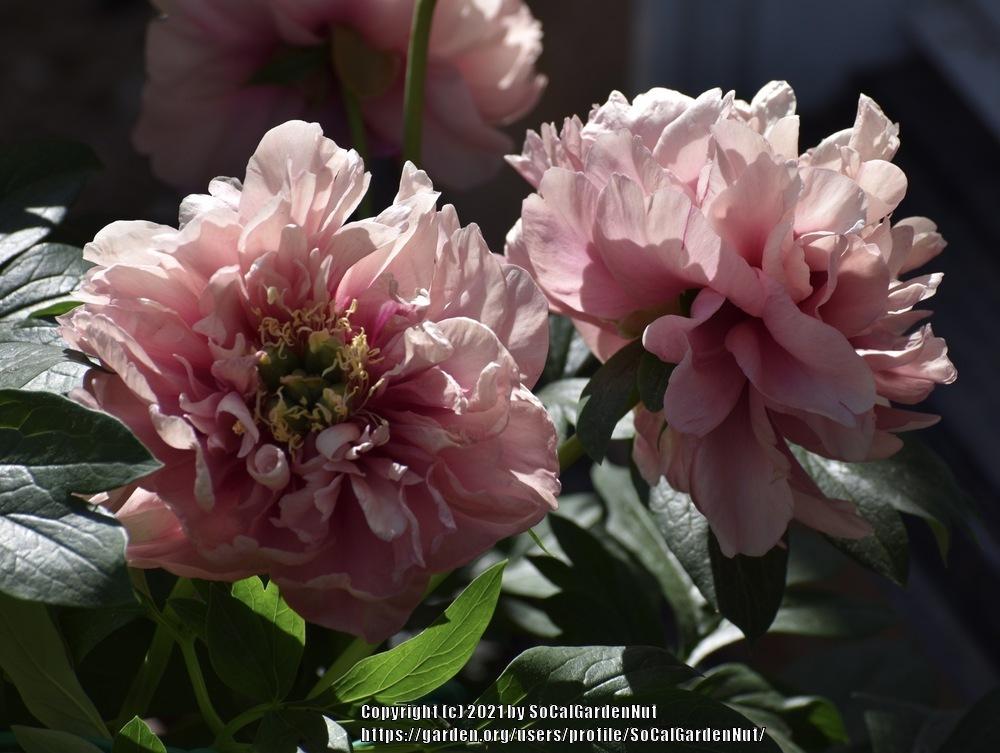
‘Caroline Constable’
For me personally the Itoh peony is big time. The number one plant on my wish/bucket list. The Itoh peony was the very first cross pollination between a herbaceous peony and a tree peony. I had only seen photos of their exquisite blooms online or in English garden magazines along with the fantastic story of their creation.
For long decades, endless previous attempts by hundreds of people, had repeatedly and dismally failed to cross pollinate the two peonies. It seemed to be a hybridizing fantasy. The great obstacle was that the bloom times of the two peonies are many weeks apart, making cross fertilisation mighty difficult. Compounding the issue, though they both are members of the genus Paeonia, genetically they are not so closely related.
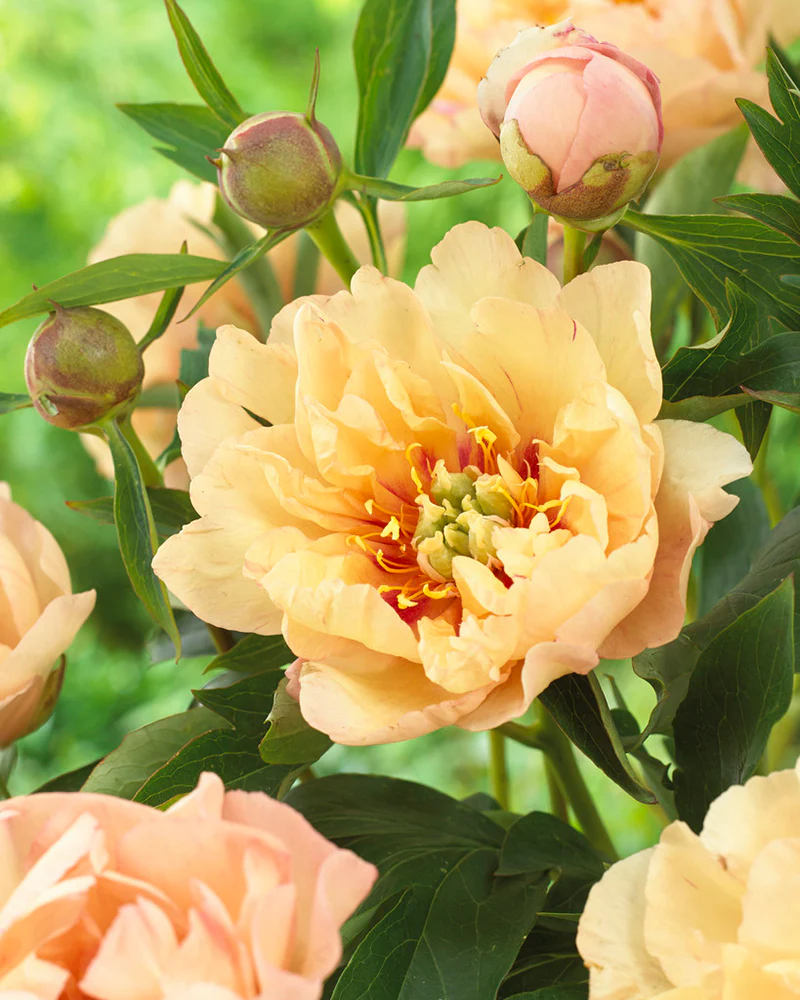
‘Canary Brilliants’
The story of the creation of the iconic Itoh peony is a great and fabulous one. In 1948, in the aftermath of World War 2, a Japanese horticulturist, Dr. Toichi Itoh, as in a miracle, was the first to ever successfully cross hybridize the two peonies. He was able to combine the pollen from a tree peony to the ovary of a herbaceous peony. The elusive dream had been finally realized.
Then the great wait began, and a very long wait it was. The only way to fulfill this cross fertilisation dream was by cultivating them from the resulting germinated seeds. For Itoh, it was nearly a decade of unrivalled patient toil and dedicated perseverance before the seedlings grew to near maturity. So very tragically, in 1956 Itoh sadly died, without ever seeing for himself a single bloom produced from his great achievement.
His widow and son continued in the care of the further maturing peonies, and two years later in 1958 they were able to produce the first ever blooms. And what magnificent blooms they were, a combination of the best attributes of both peonies. The blooms stood at 1 metre high, thus needing no staking. The flowers were 20cm or larger in diameter, with the great bonus of a second set of blooms, and upon maturity could produce 50 blooms or more per plant in a single season. It was a Bingo.
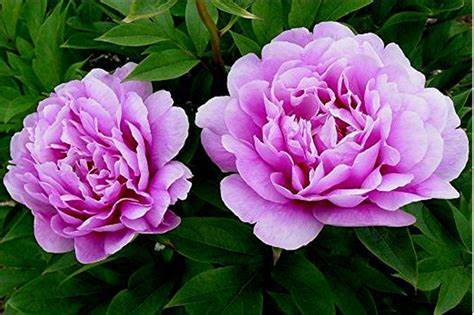
‘Impossible Dream’
Itoh’s family in due course sold the majority of the plants to an American horticulturist, Louis Mirnow. He further continued Itoh’s work and with the true acknowledgement of Itoh’s groundbreaking accomplishments, coupled with the greatest honour and respect, patented them with the name of ‘Itoh’ peonies. Thankfully his fame and legacy would forever live on. In the following years, other Americans began to hybridize new varieties. At this time each specimen was to cost between $700 to $1,500.
The successful cultivation of all peonies, whether they are herbaceous, tree or Itoh, is the ultimate test of soil preparation. This is to ensure their future health and growth and in turn the optimum opportunity for their future prolific flowering. Interestingly, on the back of my newly purchased Itoh peony packet, the label states ‘add a couple of kilograms of lime to the hole, no, not kidding, with the addition of Dynamic Lifter’. It also recommends future applications of lime and fertilizer to be applied at both ANZAC and Melbourne Cup Day, both iconic days in the year’s calendar and thus easy as chips to remember. A monthly soluble solution of trace elements is also mightily beneficial, and an additional dressing of phosphorous when the peonies are in bud will encourage better blooms.
Contrary to the planting of herbaceous peonies, when planting Itohs the eyes of the buds should be left exposed a good 5cm above ground level.
This is my own recipe for soil preparation.
- A large plastic basket with handles
- A half bag of the best quality compost
- 2 kilos of lime
- 1 handful of Dynamic Lifter
- A dusting of blood and bone
- 3 handfuls of Seamungus, and another 3 to complete the planting
Combine all well together in the basket.
The base of the dug hole should be at least 20 in depth and 30 to 40cm in width. Mix another handful of Seamungus in the hole and lightly dig it in. The Seamungus will generate 50% greater root development and growth than normal, which is all so paramount when attempting to get them to mature and flower for the first time.
Water the dug hole very well and let it drain. Then plant the peony, backfilling the hole with the prepared compost, and another handful or two of Seamungus on top, similar to icing a cake. Then create a moat of normal compost to surround the roots circumference, to maximise good, deep and generous watering when needed in the future.
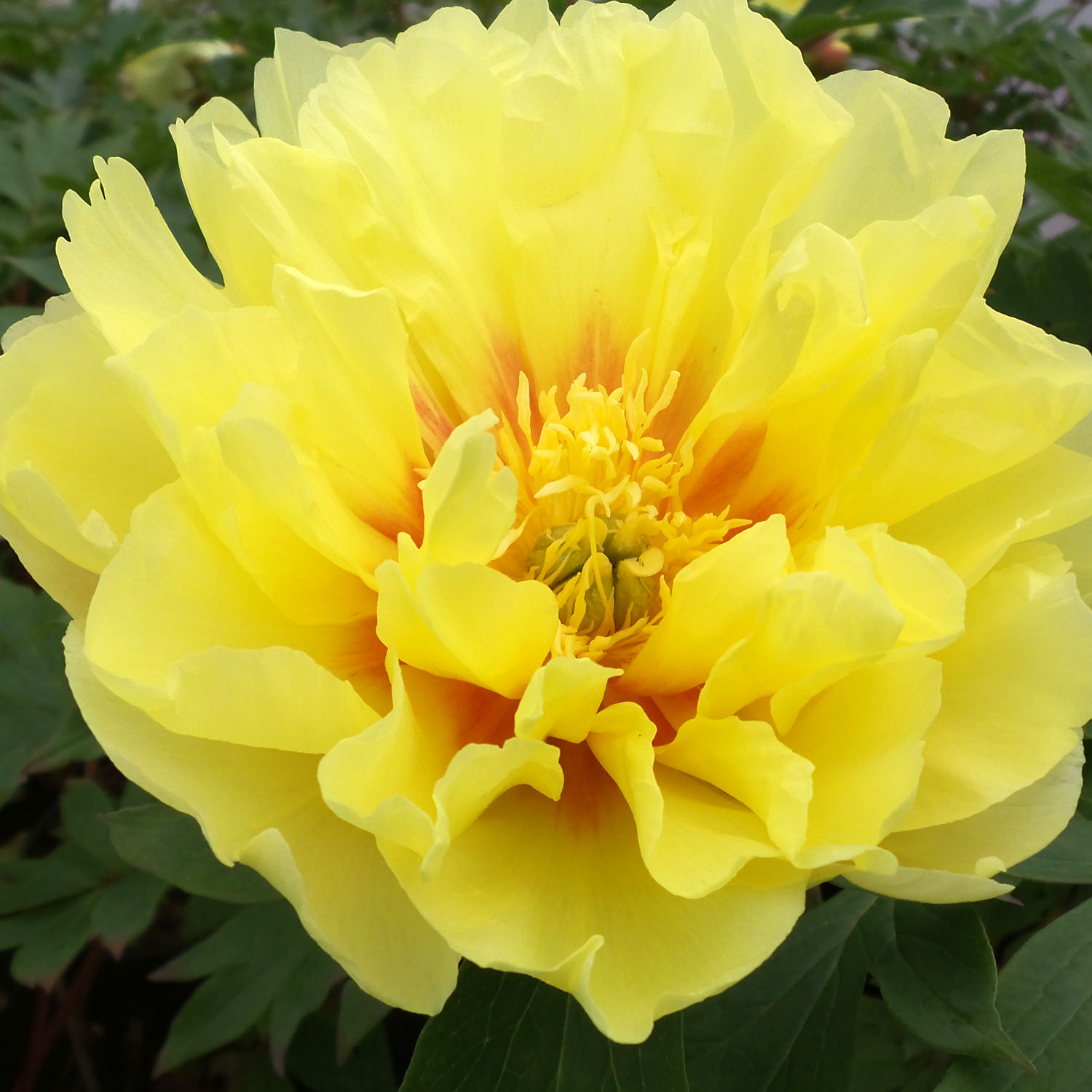
‘Bartzella’
It is mandatory to never mulch the plant in winter. Peonies need a long cold winter, with a month or two of settled frosts on their bare soil for the flower buds to develop fully. It is also in winter, when the plant is naked of any foliage, is primarily the only time when the roots are active in growth. The absorbed and stored nutrients from these new root systems is thus what is available and used for the forthcoming new spring leaf growth and subsequent blooming.
I have heard, if you are so determined, that a nightly spreading of party ice round the plants in winter will induce flowering in warmer climates.
If planted out in spring from potted specimens, the natural instinct of the peony is to put all its resources into producing leaves and flowers instead of establishing root growth. This in effect puts the plants re-establishment back by a good 18 months. So don’t go there.
‘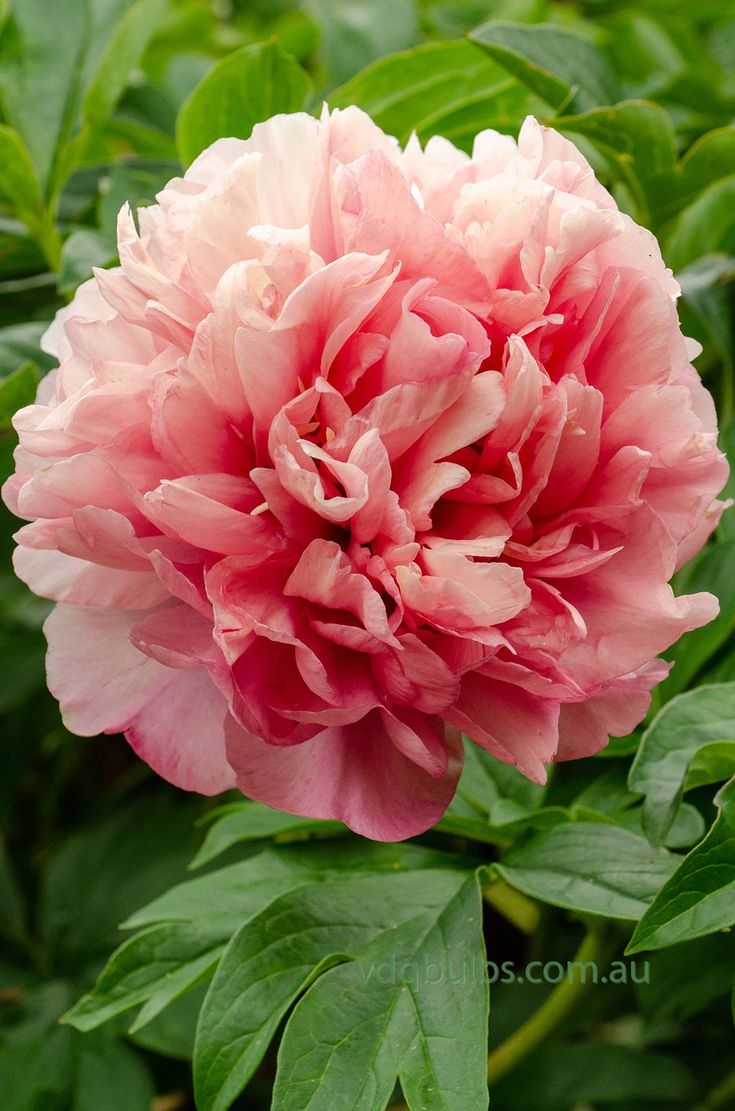
‘Oochigeas’
Of peonies, it has been said ‘the first year they sleep, the second year they creep, the third year they leap.’ Well, I am an eternal optimist as I believe almost all gardeners are, and I cannot endure the long wait of three years, for I am not getting any younger. and of late, patience is an evaporated reality.
So, I love a good contest, the opportunity to cheat nature, just that little bit, and speed up the normal rules of the peonies first blooming time. Thus let my own little competition begin. I am fully determined to win the game and produce the Itoh’s exquisite blooms asap. Wish me luck for I may well very much need it.
In addition, there is one more essential ingredient in the successful production of peony flowering, and that is a bottle of chilled Moet champagne. You may think I am joking, or a little bit crazy, even somewhat touched, but through long years of peony cultivation experience, I can genuinely guarantee with all my heart, it’s overwhelming contribution to the certainty of their prolific blooming. But that whole story is for another blog.
This blog was originally written ten months ago when i first planted my first two Itohs. Last spring i did indeed have a great success with multiple flowers on both plants, just three months after their plantings. So, I did win the game and must have done something right. I have duly repeated the fertilising recipe and this spring I expect a lot more blooms and hopefully over a longer season of flowering. Hopefully so can you.
Happy gardening, good luck and most importantly have fun.
Regards Ned McDowell